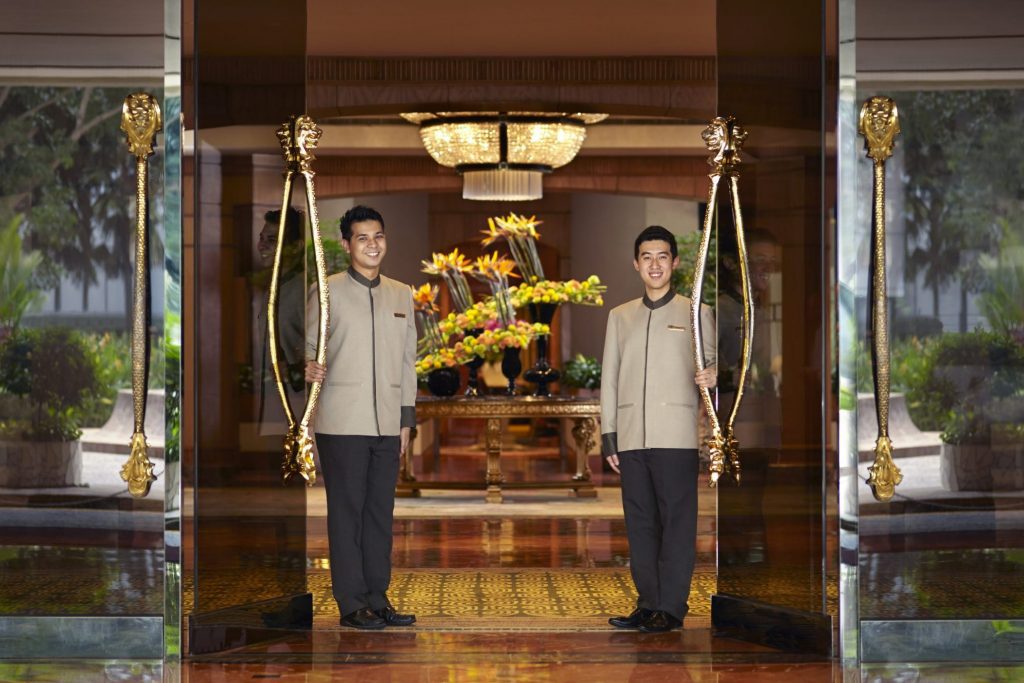Skift Take
With new hotel brands popping up every day, it can be a challenge to establish name recognition among consumers. That's one challenge InterContinental Hotels Group doesn't have to deal with as it works to revive the Regent brand.
Regent Hotels & Resorts may be the most prestigious luxury hotel brand you’ve never gotten a handle on, but InterContinental Hotels Group (IHG) hopes to change that.
Since IHG purchased a 51 percent stake in Regent last year — with the right to acquire the remaining 49 percent interest starting in 2026 — the company has been working on ways to reimagine the nearly 50-year-old brand and to spread its flag around the world.
There are currently only six Regent hotels open in five countries. IHG’s intention, however, is to grow the brand to more than 40 hotels worldwide. Four properties are already in the pipeline, including new builds in Indonesia, Malaysia, and Vietnam and a reflag in Hong Kong (more on that in a minute).
Tom Rowntree, IHG’s vice president, luxury brands, said the company made the purchase to fill a major gap at the top end of its portfolio.
“We identified from consumer demand that we needed a brand above InterContinental, a brand that would compete with Four Seasons, Mandarin Oriental, Ritz-Carlton, and The Peninsula,” he said.
In Regent, IHG “saw an opportunity to acquire a brand with an incredible heritage —which is critical for luxury brands to anchor from — but also one that would appeal to new upper luxury consumers.”
A Bit of History
Regent quickly became known as a pioneering luxury brand after launching in 1970. Joe McInerney, former CEO of both the Pacific Asia Travel Association and of the American Hotel & Lodging Association, was in Hong Kong when Regent’s flagship opened in 1980.
“It was a spectacular hotel. It had all the bells and whistles before anyone else did. The personal service was also far ahead of its time,” he said.
Due to elevated service and design aesthetic, the brand had a good reputation from the get-go. But it never got that large.
“You need a lot of money to start a brand, and they didn’t have the financial wherewithal to move in a fast progression and take it to the next level,” McInerney said.
That may be why, in 1992, the brand was sold, just as it was starting to get traction. That year Condé Nast Traveler included eight of the brand’s hotels on its World’s Top 25 List (back when that list was the gold standard). Four Seasons acquired Regent and then proceeded to slap its own name on most of the new Regent properties under development.
Carlson then bought Regent from Four Seasons later that decade, when the brand consisted of just six hotels. The brand continued to languish as part of the Regent Luxury Group, which included Regent Seven Seas Cruises, now part of Norwegian Cruise Line Holdings. Next it was sold to Formosa International in 2010, which already owned the Regent Taipei.
Despite its small size and spotty history, “Regent has considerable brand equity, mostly in Asia. But in some regions, it’s a new brand, so that gives us the opportunity to play in the space,” Rowntree said.
In essence, in Regent, IHG has the best of both worlds, since “we have a brand heritage and DNA to springboard from.”
Reimagining the Brand
As it moves the brand forward, IHG is focusing on customer service and forward-thinking design, in line with Regent’s historic allure.
“In order to crystallize the brand, we did consumer research in key feeder markets. We brought together focus groups of high net worth individuals in China, Hong Kong, and London to get their opinions,” Rowntree said.
“It’s not rocket science. Sometimes, the things that make such a difference are quite simple.”
For example, in dealing with the high-end business customer, there was a realization of the importance of appealing to executive personal assistants, who are responsible for the details of their bosses’ day-to-day business life. As a result, Regent is developing a personal assistants’ portal that will allow hotel staff to connect to the PAs and vice versa, so as not to bother the jet-setting guest.
Building on Regent’s design renown has been another important element of the first-year brand buildup.
IHG has consulted with a panel of style tastemakers in the luxury space, in order to learn how to stay true to a company’s heritage while evolving the design and technology. It’s also developed a new interior design aesthetic.
Rowntree said it will be one of discreet opulence, using jewel tones, including ruby, dark teal, and purple, to make rooms and public spaces pop. The brand’s signature color will be celadon, which has its origins in ancient Chinese pottery.
Because Regent already has six properties, the brand can pilot ideas before rolling them out to a larger brand. It’s been part of the experimental phase of the brand, said Rowntree, where IHG has been targeting its market, developing the service proposition, and creating the design and visual identity. Rowntree said the company is now in the “landing/operational phase” and will be seeking out growth opportunities as it introduces the reimagined brand to the investor community.
After that, the InterContinental Hong Kong, the original Regent flagship, will undergo a major refurbishment.
“After the refurbishment, we will be opening our doors once again as The Regent Hong Kong, a flagship property for the Regent brand,” said Goodwin Gaw, chairman of Gaw Capital Partnership, which owns the hotel.
Have a confidential tip for Skift? Get in touch
Tags: ihg, intercontinental hotels group, luxury, regent
Photo credit: Staff at Regent Singapore. IHG bought a majority stake in Regent Hotels and Resorts in 2018. IHG
